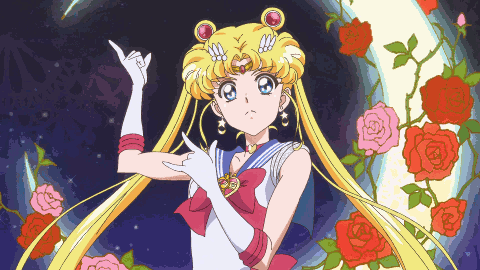This month across our crate lines, we’ve celebrated some of our favorite franchises that involve characters who make spectacular TRANSFORMATIONs. Of course, we’re never able to get all of our faves into the crate…
There are so many terrific metamorphoses of awesome characters, that span incredibly diverse genres – anime, fantasy, scifi and horror just to name a few. We thought we’d take this last Friday Five of this month’s theme to celebrate some of the other moments we love that are truly transformative… enjoy a motley crew of some real faves!
Sailor Moon Crystal
Sure, the original Sailor Moon anime from the 1990s is where many of us cemented our love of the magical girl transformation sequence, in all its windswept, sparkly glory. Many years later, Sailor Moon Crystal debuted across streaming services to massive fanfare; opinions of the reboot, which was much closer to the original manga, were split among O.G. fans but one thing’s for sure – those flashy new “makeup!” transformation sequences were GLOOOORRRRIOUS! (Obviously your faves are gonna vary depending on who your fave Senshi are, but gosh Rei and Mako’s fire-and-lightning effects are suh-weet!)
Stardust
In your usual romantic fantasy, it’s quite common for a female heroine to undergo some kind of transformation before the end (think Cinderella and every permutation of her general story throughout the years). It’s rare for a fantasy male lead to get an actual makeover – but then, most fantasy tales don’t also feature Robert DeNiro as a closeted sky pirate with amazing fashion sense. Most who knew Charlie Cox before Daredevil remember him as Neil Gaiman’s hero Tristan Thorn, whose glow-up from awkward dweeb to full-on Disney prince material in the film adaptation was swoon-worthy. (Also, there’s the bit where he transforms into a mouse and Claire Danes confesses her love for him. Classic.)
Max Headroom: 20 Minutes Into the Future
So if we’re going to split hairs, this one doesn’t qualify as an actual transformation… at least not in the end. Max Headroom, the fake-digital video hose played by Matt Frewer first for the UK’s Channel 4, got this origin story (later turned into a short-lived but amazing ABC show in the states) to explain his existence: TV reporter Edison Carter (also Frewer) has his consciousness uploaded into a computer following his apparent death. Now, if he had died that would have been a true transformation; much to the chagrin of his evil network, he survives. Still, part of his brainwaves have formed a whole new entity! (FYI, this YouTube clip is the entire original UK feature. If you’ve got an hour to kill, totes worth it for dystopian scifi fans)
Robocop
[WARNING: Salty language in this clip] When the moment comes in this action classic for murdered cop Alex Murphy to be transformed into unstoppable cyborg Robocop, we’ve just been through a harrowing sequence in which his literally blown to bits by gunfire. It’s a deft decision by director Paul Verhoeven not to literally show the remains of Murphy being forged into a part-man-part-machine warrior; rather, he cuts in and out of Murphy’s “consciousness” as the OCP executives discuss their oh-so-secret plans for him. Even better, Verhoeven refrains from showing you Robocop’s final look even after this sequence; he builds up the anticipation in bits and pieces until he-who-was-Murphy strolls back into his old precinct.
An American Werewolf in London
[WARNING: Gnarly effects and side butt in this clip!] Look, if you ask most cinema fans for their favorite “transformations” – specifically that word – chances are the generation who grew up with the pop culture POV of the 80’s in particular will point to John Landis’ 1981 horror-comedy. The fact is, no exaggeration, no one had seen a transformation like this in a film before; to have David Naughton’s nascent werewolf make his entire transformation in camera, through the use of groundbreaking physical effects with no fades or camera tricks, was revolutionary. Masterminded by legendary creature creator Rick Baker, American Werewolf‘s FX were so good they inspired the creation of the Best Make-Up Effects Oscar – the first of which, fittingly, Baker won.



